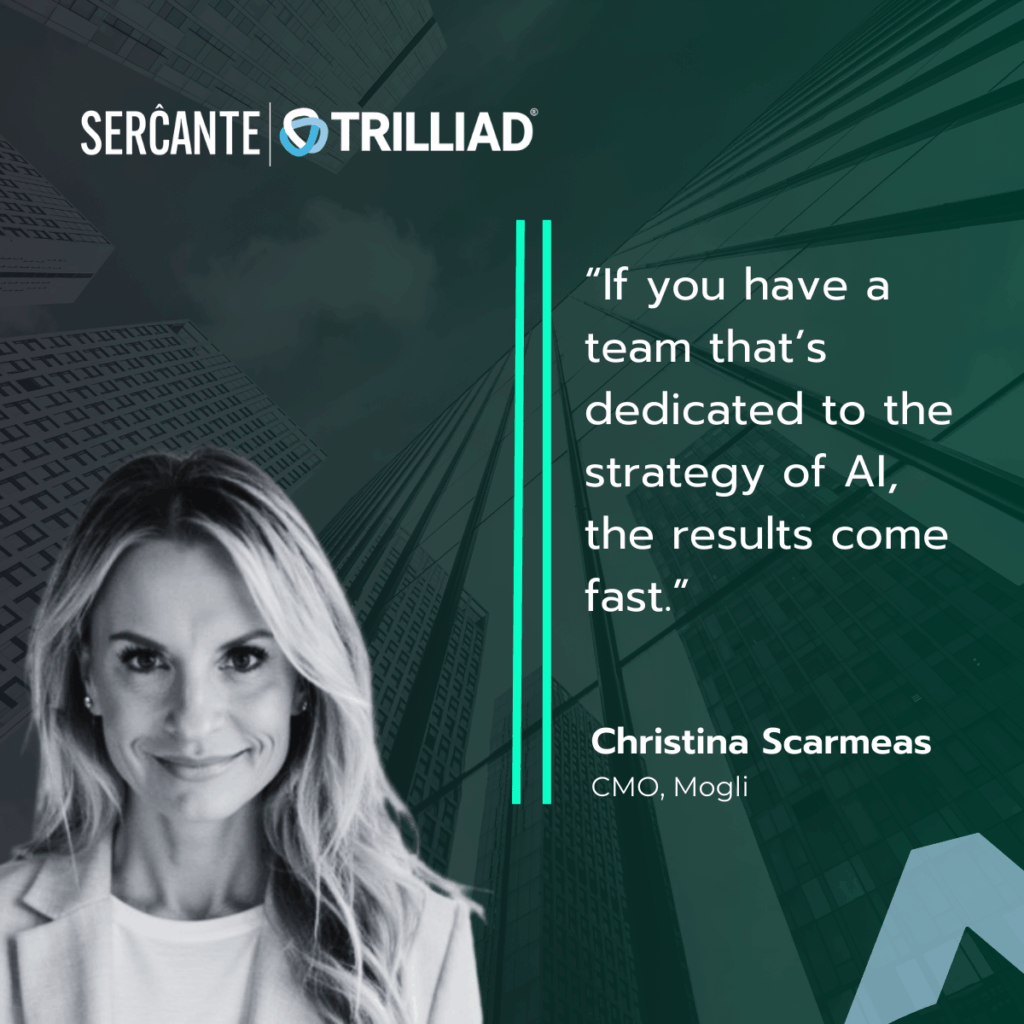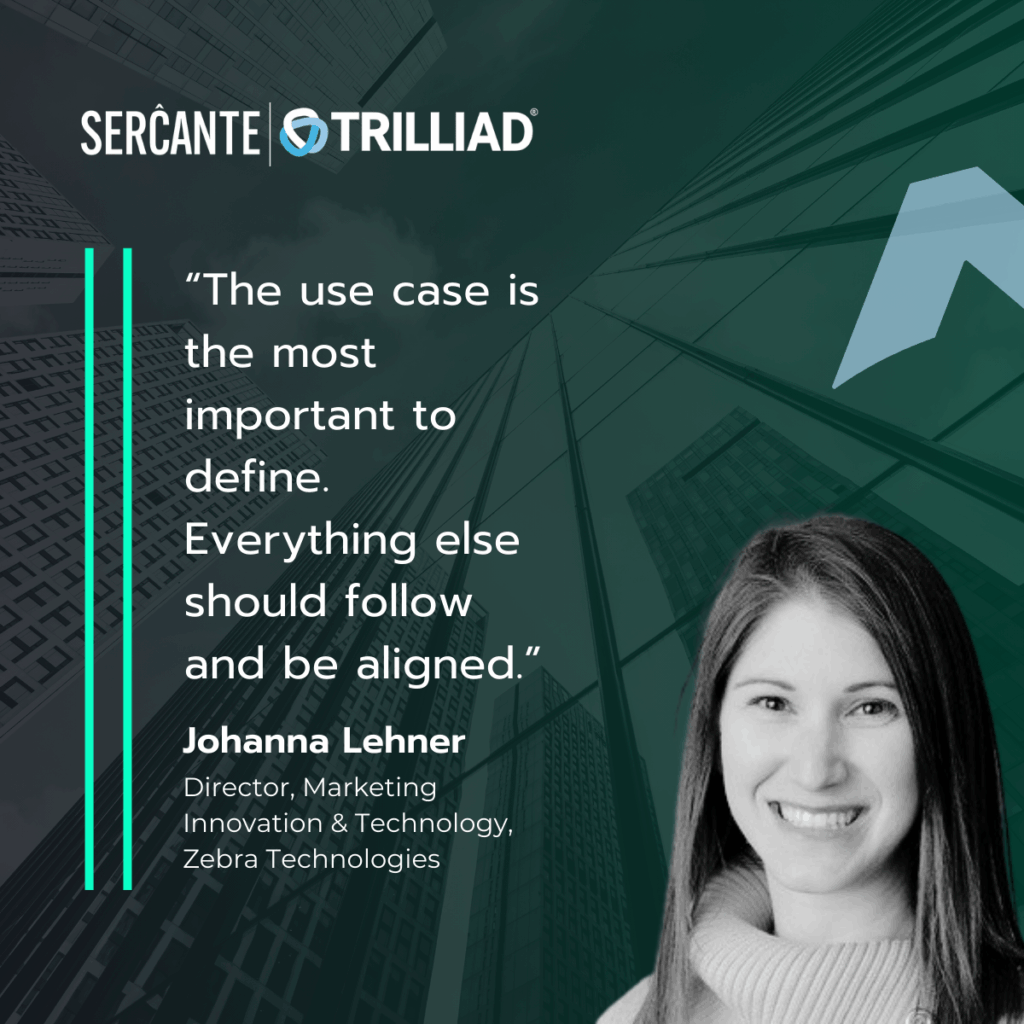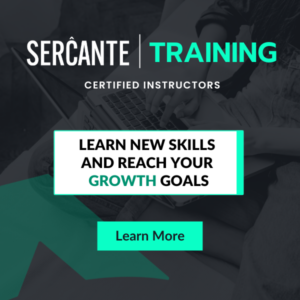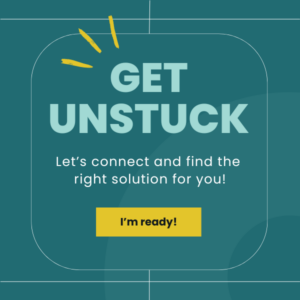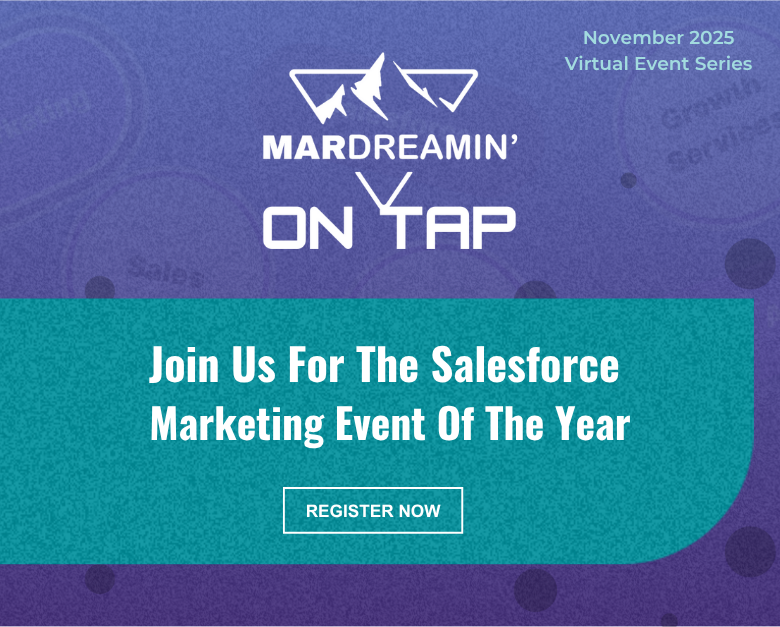If you’re feeling overwhelmed with AI at your organization, you’re not alone. In fact, during our recent webinar, AI Roadmap: The Strategy to Drive Growth with AI, 85% of attendees said they were either leading or supporting AI initiatives at their organization. And 70% of them admitted they had more questions than answers. Therefore, we’re sharing our proven approach for creating an AI roadmap that results in meaningful impact, to be a guide for growth leaders who are navigating AI for their organizations.
Why an AI roadmap matters
Just like any other solution, implementing AI without a set strategy and a plan for how it will be used, the goal you’re after, the dependencies to consider, and enablement for your team, is only going to hold you back from maximizing its value. If anything, diving in without a strategy will most likely highlight your gaps in processes, data, and alignment.
According to RAND, 80% of AI projects fail due to a misalignment of the problem being solved, not having adequate data, or a lack of infrastructure and readiness. These causes for failure can be avoided if teams take the time up front to think through their strategy. As the CMO of Mogli, Christina Scarmeas, shared from her episode, Using AI & Agentforce to Make it Easier to Text on Salesforce (Watch here), “The biggest thing that we learned was it’s okay to take a crawl, walk, run approach…if you put that infrastructure together and actually have a team that’s dedicated to the strategy behind [AI], the results come fast.”
Therefore, when navigating AI and rolling it out in your organization, don’t skip the important step of defining your strategy and building your roadmap. When considering how to start thinking through your strategy for AI, use the steps below from our proven approach to get started.
And if you’re ready to take action to start creating your customized AI roadmap with the guidance from our experts, check out our AI Workshop: Building Your Roadmap for Real Impact.
The Proven Approach to Create Your AI Roadmap
When thinking through your strategy for how to get started with AI, you want to start with your use cases and the goals you want to accomplish. Then, using your use cases and goals as the foundation allows you to tie to the business value and consider the data needed, the dependencies, and the impact it will have on your people for change management, so your first step is to frame your vision.
Start with the vision
To get the ideas started, think about your team’s daily workflows. Where are the friction points in their day? What repetitive tasks are slowing people down? Where is your time being taken, or where are you missing opportunities? That can start to highlight a few efficiency gains you could get from implementing AI for internal use cases.
Most importantly, you also want to think about your customer journey. Where are the friction points for the customer? What transition points could be made more seamless if AI were used? Taking this customer-centric approach will then highlight use cases where AI could be deployed for externally facing engagements.
As you identify your use cases, start defining the goals you want to accomplish. For example, if you implement AI to assist with lead qualification, what is the desired result you want to come out of that? What is the problem being solved, and what will success look like?
Then combine everything into one vision statement. The vision statement should capture:
- WHO: The people involved who will benefit from the implementation
- WHAT: The capabilities that will be added to your organization
- WHY: The impact that is expected as a result
This is the most critical step, and leaders who have started down this path of approaching AI for their organization agree. The Director of Marketing Innovation & Technology at Zebra Technologies, Johanna Lehner, shared on her episode, Future-Proofing Technology Through Impact-Driven Use Cases (Watch here), that“The use case is the most important thing you want to define…so that you’re thinking about what that process looks like in order to meet that goal or accomplish that use case in the most efficient and effective way possible. I would say that’s the most important thing, everything else should follow and be aligned with those goals that you’re trying to accomplish with the tool.”
Your vision becomes your north star that guides your team through the rest of the AI roadmap process.
Anchor it to the business value
This is where we shift from “wouldn’t it be cool if…” to “here’s why it matters.” For every use case you consider, think about what value it would add to your organization. Does it drive revenue? Improve customer satisfaction? Shorten the sales cycle? Some use cases will be mission-critical, while others might be helpful but not game-changing. For each use case, frame if it would be a high, medium, or low level of value.
- High: Critical to the organization’s strategic goals
- Medium: Important and contributes to the organization’s goals
- Low: Has a minimal direct impact on the organization’s strategic goals, financial performance, or overall operations
Framing the level of business value will help guide the team’s decision-making later when choosing which use cases to prioritize first. But, in addition to the level of business value, you also have to consider the level of impact on your people.
Evaluating the impact on your people
Let’s be clear: AI is a people thing. Yes, it’s tech. But adopting it requires real humans to shift how they work. That means you need to map the impact. Will an initiative completely overhaul someone’s role? Or just take a few manual tasks off their plate? The more disruption, the more intentional you need to be about change enablement. Low-impact projects might require just a little training. High-impact ones? Those need a communication plan, champions, and a solid support structure. Therefore, for each use case, you’ll also want to define the level of impact on your people.
- High: Many roles are impacted, many processes will change, and roles will be redesigned
- Medium: Some roles are impacted, some processes will change, and roles might change slightly
- Low: Very few roles are impacted, minimal process changes, and no role restructuring will be needed
As you consider the level of business value and how your people will be affected by the AI solution implemented, this thought process will highlight the level of effort that would be required for rollout. This is where finding the ideal sweet spot comes in for all three when considering which use cases to prioritize first on your roadmap.
Finding your sweet spot
Every use case you explore should be evaluated based on three things: the value it delivers, the impact on your people, and the level of effort it will take to implement. Think of this like a chart where you’re looking for where the ideal points intersect. The sweet spot with medium to high business value, relatively low people disruption, and feasible to get off the ground. We’ve seen many organizations start with internal processes to get some efficiency gains as a starting proof of concept. However, these small efficiency wins are not to be overlooked as they add up to greater impact and make the customer experience feel that much more seamless. experience feel that much more seamless.

For example, Advanta Health partnered with Sercante to implement Agentforce to help scale their member services team and address the needs of their growing customer base. The solution surfaced answers to FAQs faster, using their Knowledge articles, assisting the service team, and cutting down on their handle time, while making responses more consistent across the board. As a result, members reaching out with inquiries experience a more streamlined engagement that gets them the answers to their questions faster.
Therefore, when considering which use cases to start with first on your roadmap, use the “sweet spot” to guide you, and don’t underestimate the impact that can come from small efficiency gains.
Once you start to get an idea of the use cases you might want to start with, based on where they land among the level of business value, people impact, and effort to deploy, the other important piece you need to consider, which will impact your level of effort, is your dependencies.
Map your dependencies
This is the part of the roadmap where things can get messy if you don’t slow down and look under the hood. Before rolling out anything new, you need to assess what it’s going to take to support it. Do your systems talk to each other? Is your data accessible and clean? Do you have a governance structure in place? Do your people have time and capacity to manage the shift? These aren’t roadblocks—they’re flags that help you build smarter. Ignoring them can cause your AI project to fail.
Here are some starting questions to ask yourself to help identify your dependencies:
Technology
- What technologies do you already have?
- Do you have gaps in technology needs based on the use cases?
- What will it take to close these gaps?
Data
- What data will AI need access to?
- Do you have data sources that are not integrated today?
- Do you have data quality issues?
People
- What teams/roles are impacted by these AI use cases?
- What amount of time will AI unlock for these teams? What can they focus on instead?
As you think through the dependencies for each use case, this can help give you a clearer idea of the level of effort it would take and then better inform which use cases truly fall in the sweet spot.
Then last, but certainly not least, if you didn’t already think through the metrics you’ll use to measure success when defining your goals in the first step, this is where you’ll want to do that.
Define your success metrics
If you want to prove AI is working, you need to measure it. Tie every use case to a clear outcome. That might be lead conversion, campaign ROI, sales cycle length, or something else entirely. Pick metrics that matter to your business and are realistically measurable. And don’t wait until you’ve rolled something out to start tracking. Get benchmarks in place now so you can show progress early and often.
A final word of wisdom
The final and last piece of wisdom when thinking about your approach to AI is your unique AI path is the only one that matters. Now is not the time to be a copycat with AI. The chatter I keep hearing is, “What are other companies doing? What are their use cases? How quickly can we implement those use cases at our organization?” And frankly, it feels dangerous.
Why? Because the last decade has left every single company with a unique technological fingerprint. We all have our own way of working, our own internal processes, and a pile of tech debt and data quality issues to go along with it.
Thinking you can just copy someone else’s AI strategy is like trying to replicate a recipe with totally different ingredients. The output is destined to be different. The truth is, the successful path isn’t about looking outward. It’s about looking inward.
Therefore, when thinking through your AI strategy, don’t be so concerned about what everyone else is doing, focus on what will drive value for your customers and your business.
Getting started on your AI Roadmap
Creating an AI roadmap is about solving real problems in a way that supports your people, your business goals, and your vision. It is your guide to rolling out a successful AI solution that empowers your people to focus on the most important initiatives and deliver a seamless experience for your customers.
If you’re ready to dive in to start building your AI roadmap and would like an expert guide to take you through step by step, of defining your vision and use cases and creating your prioritized roadmap, reach out to the Sercante team. We’ve helped many organizations get on the right path to maximizing AI for their organization and driving meaningful business impact with our AI Roadmap offering.

